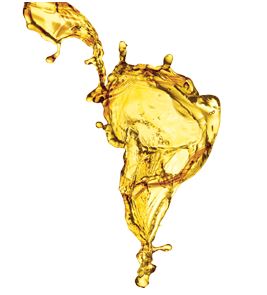Overall demand for finished lubricants in Latin America and the Caribbean was negatively affected by the regional economic downturn during the period from 2014 to 2016. However, this general challenging picture is hiding a number of dynamic markets, such as Chile, Dominican Republic, Panama, and Costa Rica, where lubricant demand is posting above-average industry growth, finds the recently published Opportunities in Lubricants: Latin America and Caribbean Market Analysis report by global market research and management consulting firm Kline.
As the region starts to pick up, it is entering a new post-recession cycle in 2017. The regional differences emerging show that growth will not be uniform.
Uncertainty around Brazil’s economy, the largest market in South America, and a drop of crude oil prices affecting net oil exporters like Venezuela, are some of the factors deterring a more robust growth in the region. Since China became a major importer of South American commodities over the last decade, from crops like soya to meat, metals, and crude oil, the slowdown of the Chinese economy has also affected the region’s growth.
“With overall volumes continuing to decline in Brazil during the 2016-2017 biennial, the main challenge in the lubricants industry is keeping profitability levels and avoiding ‘value destruction’ in search of higher volume share,” comments Sharbel Luzuriaga, a Project Lead in Kline’s Energy Practice.
However, Brazil is forecast to start recovering by 2018, particularly driving demand for PCMOs, which are estimated to grow at a CAGR of 2.5% through 2025. Mexico, Central America, and the Caribbean will post robust growth due to a closer connection with the United States, as well as benefits arising from the low crude oil prices, given the fact that this regional cluster is a net importer of crude oils, with the exception of Mexico.
The key characteristics of the finished lubricant markets in the region includes overall demand dominated by the industrial segment with agriculture, food processing, mining, and light manufacturing being main end-use industries. Furthermore, the vehicle parc is based on secondhand imports where primarily low quality performance lubricants are used. There is minor penetration of synthetic products, as well as a significant presence of counterfeit products.
Global majors ExxonMobil and Shell, the top two suppliers of finished lubricants in Latin America and the Caribbean, servicing the region by macro distributors, are increasingly facing fierce competition from local/regional prominent companies, such as Petrobras, Ipiranga (Brazil), MexLub, Roshfrans (Mexico), and YPF (Argentina), among others.
The market is expected to maintain a shift towards technological development, as more advanced engine oil performance grades enter in the near future. However, this development evolves faster in larger markets, such as Brazil, Chile, and Mexico. Currently, conventional multigrade PCMOs, 15Ws, 20Ws, 25Ws, and SAE40/50 dominate the overall Latin American markets, accounting for more than three-fourths of the total PCMO demand in the region. Conventional multigrade HDMO, 15W-40/50, continues to be the dominant grade for heavy duty engine oils in Latin America, accounting for more than 50% of the total HDMO demand in the region. Whereas, in the industrial segment, process oils, hydraulic fluids, and industrial engine oils lead the demand.
Finished lubricant demand in Latin America and the Caribbean is forecast to reach 3.9 MT in 2020 and 4.3 MT in 2025, with Brazil, Mexico, Argentina, and Chile leading the way. Future growth in the region will be driven by an increase in exports and trade deals with North America and other regions, namely the EU, as well as countries from the Pacific Rim.
To learn more about the most interesting lubricant markets in the Latin America and Caribbean region, download our latest factsheet.
These findings and more are available in the recently published Opportunities in Lubricants: Latin America and Caribbean Market Analysis report.

